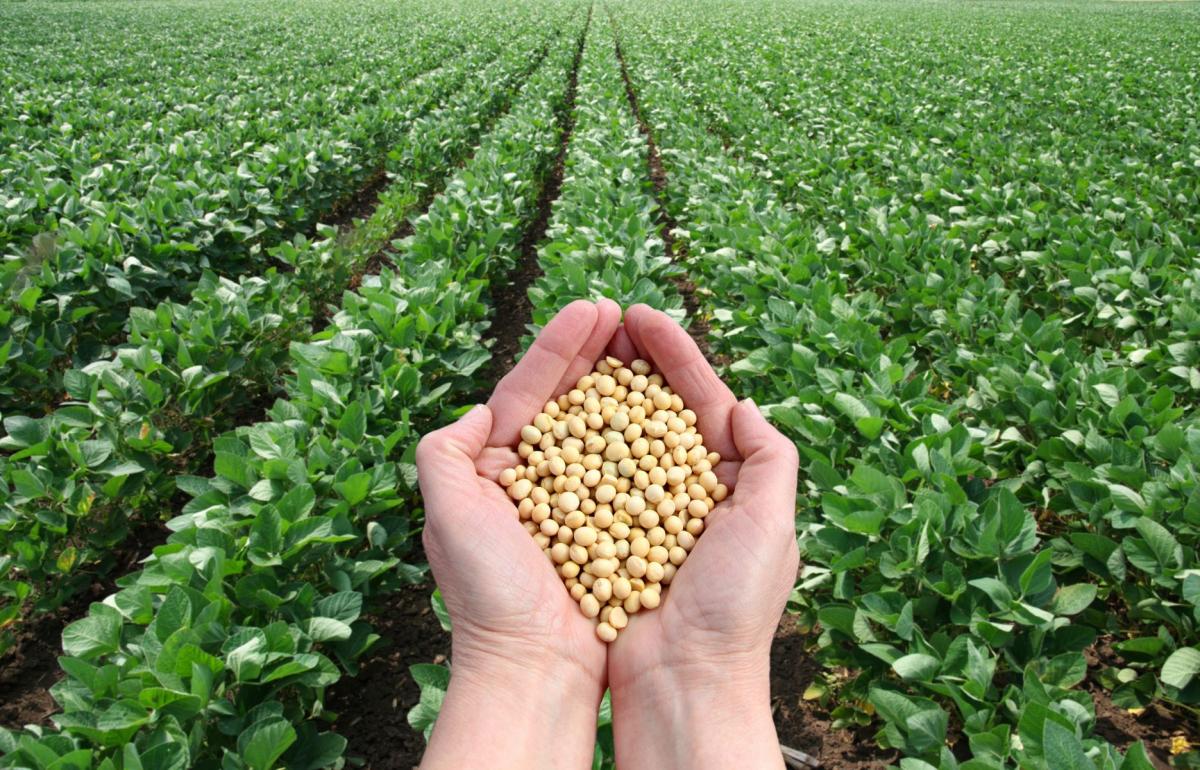Sudden Death Syndrome (SDS) and Brown Stem Rot
Sudden Death Syndrome (SDS)
Sudden death syndrome (SDS) of soybeans is a soil-borne fungal disease caused by Fusarium virguliforme.
This fungal infection infects the plant early in the growing season; however, foliar symptoms of SDS typically do not appear until R3 (beginning pod) and later growth stages. Initial symptoms consist of chlorotic (yellow) spots on the leaves between the veins (Figure 1). As the disease continues to progress, the yellow spots may coalesce but stay between the veins at the leaf margin. Over time, the yellow areas start to become brown (necrotic) in coloration as the tissue starts to die (Figure 2). The tissue death between the veins is commonly referred to as interveinal necrosis. As the disease continues to progress, it is common to observe abortion of pods and plants and defoliation early in the growing season. The defoliated plants will retain their petioles (leaf stems), which is a symptom very commonly observed with SDS.
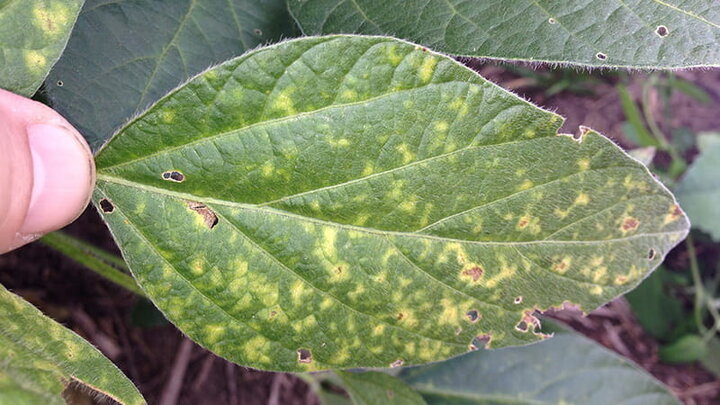

With this disease, however, the fungus infects through the root system, so closer examination of the root system is critical to identification. The roots will exhibit typical root rot commonly observed on the taproot. When the stem, crown and root of the plant is split in half, discoloration of the vascular tissue is restricted to the outer stem area (xylem) and extends up into the stem from the soil line (Figure 3). The pith of the plant remains white in coloration (Figure 3). Figure 4 shows the disease cycle of SDS.
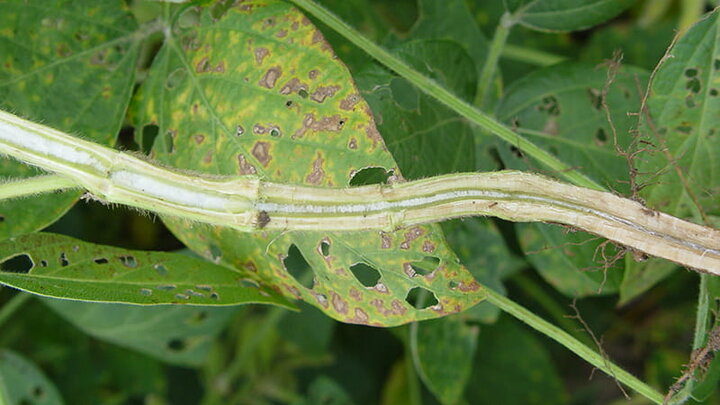

Sudden Death Syndrome Management
Genetic Resistance
Varieties with resistance or tolerance to SDS should be considered in fields with a history of SDS issues.
Cultural Management
Avoid early planting fields with a history of SDS. Soil temperature below 60°F can favor SDS infection. Reducing compaction and improving soil drainage have been shown to reduce SDS risk.
Rotation
This fungus can survive many years in the soil without a susceptible host, thus crop rotation has not been shown to be an effective management tool.
Brown Stem Rot
Brown stem rot of soybeans is a soil-borne fungal disease caused by Phialophora gregata. The fungus invades through the roots in late spring with symptoms not developing until after pod formation. Foliar symptoms observed are very similar to Sudden Death Syndrome with chlorotic (yellow) spots on the leaves between the veins. As the disease continues to progress, the yellow spots may coalesce, but stay between the veins at the leaf margin. Over time, the yellow areas start to become brown (necrotic) in coloration as the tissue starts to die (Figure 5). The tissue death between the veins is commonly referred to as interveinal necrosis. The leaves eventually wilt and die.
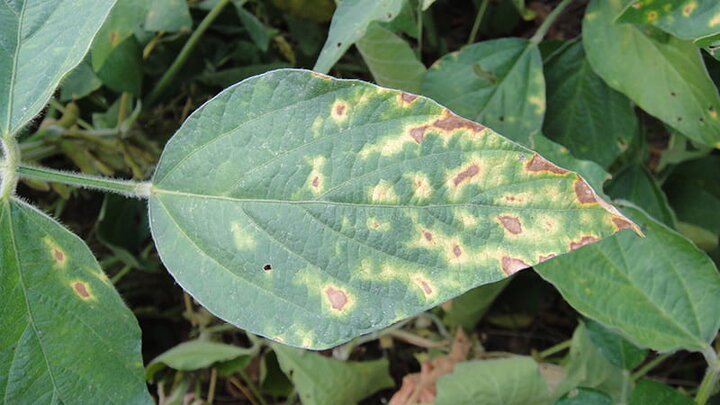
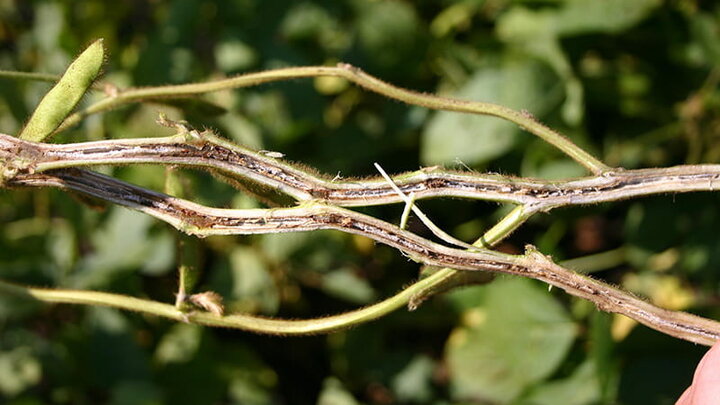
Examination of the stem is critical in identification of this disease. Splitting of the crown and soybean stem will expose a brown to reddish-brown discoloration of the stem pith. With severe infection, the pith may have the appearance of corrugated cardboard (Figure 6) and can continue throughout the stem of the plant.
Brown Stem Rot Management
Crop Rotation
Planting non-host plants such as corn or small grains will prevent buildup of the brown stem rot fungus.
Genetic Resistance
There is limited sources of genetic resistance available, but when used in combination of other management strategies, it is effective management tool.
Cultural Management
Plant soybean varieties with shorter relative maturity and avoid planting in narrow rows. Also maintain optimum soil fertility and pH for soybean production.
Tillage
Research has shown that tillage reduces the amount of brown stem rot. A study completed in Wisconsin showed that brown stem rot was 30% greater and yields were 15% lower in no-till than in conventional tillage fields.

Nebraska Soybean Board graciously provided the funding for the Soybean Management Guide.
Course authored by:
Amy Timmerman, extension educator; Aaron Nygren, extension educator; Brandy VanDeWalle, extension educator; Loren Giesler, Plant Pathologist Department head; Ron Seymour, extension educator; Keith Glewen, former extension educator; Charles Shapiro, emeritus extension soil scientist; Amit Jhala, extension weed specialist; Don Treptow, former graduate student
